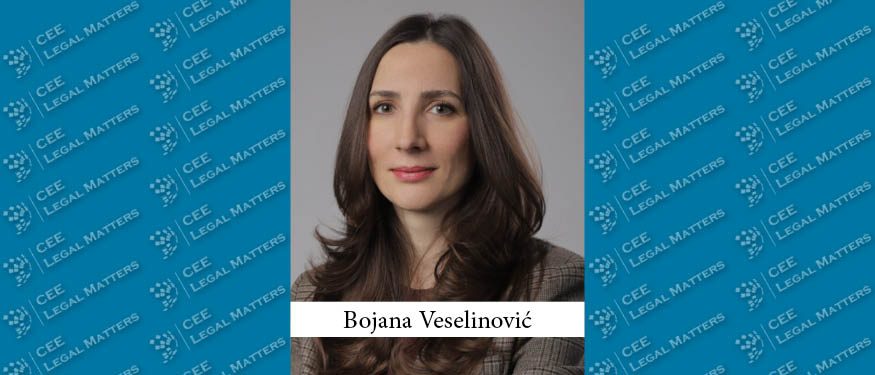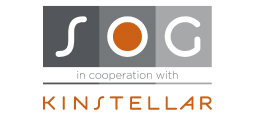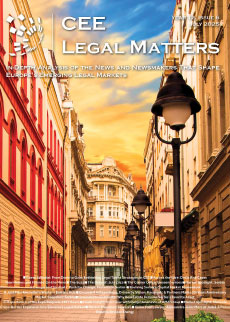As a driving force behind human progress, Intellectual Property represents property arising from the creative, inventive, or innovative activity of a human being. Such activities are protected by permitted monopolies made possible through Intellectual Property Rights. A particular challenge lies in finding a balance between protecting innovation through Intellectual Property Rights and the public interest—especially in industries where this balance plays a significant role, such as the pharmaceutical industry.
Inovation and Intellectual Property
The application of a new or significantly improved product, process, or service with the goal of creating new added value constitutes an innovation, while innovation activity refers to development efforts undertaken to create new products, technologies, processes, and services or to significantly modify existing ones, in accordance with market requrements.
Innovations that meet the conditions prescribed by regulations for the protection of Intellectual Property may be protected on that basis. Intellectual Property Rights serve as a means of protecting certain creations of the human mind, and as such, we commonly distinguish between the following types:
- Industrial Property which includes the system of patent protection, plant breeders’ rights, trademarks, industrial design, geographical indications, and the topographies of semiconductor products;
- Informal Intellectual Property which encompasses knowledge and experience (know-how), confidential information/trade secrets, business methods, traditional knowledge, and culture
- Copyright and related rights.
In the context of the pharmaceutical industry, it is widely acknowledged that patents represent the most significant form of Intellectual Property Rights used to protect innovations in this sector.
Patents in the Pharmaceutical Industry
According to the regulations governing patent protection in the Republic of Serbia, a patent is defined as a right granted for an invention in any field of technology, provided that it is new, involves an inventive step, and is industrially applicable. A patent grants its right holder the right to prevent any third party, without authorization, from producing, offering, placing on the market, using, importing, or storing the protected invention.
From this perspective, a patent is a preventive right. However, it is much more than that.
Patents play a vital role in today’s knowledge-based economy. Large corporations, small and medium-sized enterprises, and start-ups use patents to protect their ideas and assets from unauthorized imitation, as well as to secure their competitive edge.
Likewise, universities and research institutions are increasingly utilizing patents to protect the results of their research, to enable their commercialization, and to facilitate technology transfer to industrial partners. Research institutes, in particular, serve as incubators and multipliers of development, and as such, they are certainly the future of industrial progress. For example, according to the most recent EPO Patent Index for 2024, 7% of European patent applications were submitted by universities and research institutions. While this figure may seem small – and represents a 1% decrease compared to 2023 – it nonetheless marks an increase from 2021, when this share stood at 5%.
A patent is a territorially and temporally limited right. It is limited to the territory where it has undergone the registration procedure, and depending on the chosen protection system, patent protection can be obtained in one or more territories:
- National system;
- International application system – the “PCT” system;
- European patent system;
- Unitary patent.
The term of a patent is limited to 20 years from the date of filing the application.
The development of innovative products and processes requires time, which can be significantly long in certain industries. In the pharmaceutical industry, in addition to meeting the requirements of novelty, inventiveness, and industrial applicability as conditions for patent registration, a product undergoes phases of research, preclinical and clinical testing of its safety and efficacy, followed by obtaining approval for marketing from the relevant regulatory authority (for example, for drugs used in human medicine in the Republic of Serbia, this is the Medicines and Medical Devices Agency – ALIMS).
The development of innovative products and processes takes time, which can be particularly extensive in certain industries. In the pharmaceutical industry, beyond meeting the criteria of novelty, inventiveness, and industrial applicability required for patent registration, a product passes different phases of research, pre-clinical and clinical trials to assess its safety and efficacy, followed by obtaining marketing authorization from the competent regulatory authority (for example, in the Republic of Serbia, this is the Medicines and Medical Devices Agency – ALIMS, for human-use medicines).
Such a process inevitably requires years—often ranging from seven to ten – which is more than a third, and in some cases up to half, of the patent’s term. This “shortened period of exclusivity” means that a right holder of the patent in the pharmaceutical industry has significantly less time to benefit economically from the legally granted monopoly compared to other industries.
A logical consequence of this effectively shorter duration is the establishment of systems for patent term extensions in industries where marketing authorization is required before commercialization can begin. This approach ensures a balance between the resources invested in research and invention in the pharmaceutical industry and the right to economically exploit such patents. At the same time, it incentivizes inventors to pursue new and inventive solutions and encourages pharmaceutical companies to invest in research. Following the model of World Trade Organization member states, Serbia has also made such extensions possible through the granting of a Supplementary Protection Certificate (SPC) for pharmaceuticals and plant protection products.
Supplementary Protection Certificate
Any product protected by a patent in the territory of the Republic of Serbia, whose placement on the market as a medicinal product for humans or animals, or as a plant protection product, requires marketing authorization from the competent authority, may be subject to protection through a Supplementary Protection Certificate (SPC). This certificate does not extend the duration of the patent itself but merely prolongs protection for the product that has been granted marketing authorization by the competent regulatory authority.
In accordance with national legislation, an SPC is granted upon submission of an application, provided that the following conditions are met on the date of application:
- The product is protected by a valid basic patent;
- A valid marketing authorization has been granted under specific regulations for the product as a medicinal product for humans or animals, or as a plant protection product;
- The product has not already been subject to protection by an SPC;
- The marketing authorization is the first authorization for placing the product on the market in the Republic of Serbia as a medicinal product for humans or animals, or as a plant protection product;
- The first marketing authorization was issued after January 1, 2005.
The SPC takes effect immediately upon expiry of the legal term of the basic patent and lasts for a period equal to the time elapsed between the filing date of the basic patent application and the date of the first marketing authorization, reduced by five years, but in any case, but no more than five years from the start of its validity.
An additional extension is prescribed for a specific category of medicinal products. For a medicine for which all necessary studies have been completed in accordance with an approved pediatric investigation plan within the European Union, and provided that the marketing authorization has been granted in all EU member states in line with specific regulations, the term of the SPC may be extended for an additional six months.
The Balance Between the Monopoly Granted by Patent Protection and Access to Medicines
We have seen that the positive legal regulations establish a balance between years of research, risk, investment, and administrative procedures through which pharmaceutical companies must go in order to bring a medicine to market and the term of its commercialization through a Supplementary Protection Certificate.
At the same time, it is necessary to strike a balance between the legally granted monopoly granted through patent protection and healthcare, as an activity of public interest. Healthcare is an organized and comprehensive social activity, aimed at achieving the highest possible level of preservation and improvement of the citizens’ health.
A certain balance in positive legal regulations is achieved by limiting the term of the Supplementary Protection Certificate in the case of generic medicines and biosimilars.
Thus, with the latest amendments to the Patent Law in 2021, harmonization was made with Regulation (EU) No. 2019/933, which amended and supplemented Council Regulation (EC) No. 469/2009 regarding the limitations on the term of the Supplementary Protection Certificate. According to these amendments, the protection granted by the certificate, under certain conditions, does not apply to actions that involve:
- The export of products protected by the certificate for the entire term of the certificate’s validity; and
- The storage of such products in the territory of the Republic of Serbia for the last six months of the certificate’s validity, for the purpose of commercial use immediately after the certificate expires.
In this way, domestic companies, despite the validity of a Supplementary Protection Certificate in Serbia, are allowed, under certain conditions, to begin preparatory activities for the production and storage of medicines covered by the Supplementary Protection Certificate. By ensuring the timely entry of generic medicines onto the market, market competition is increased, medicines prices are reduced, access to medicines is ensured, and a sustainable healthcare system is created – this being the very objective of introducing this limitation. Thus, a balance between the legally granted monopoly and access to medicines is achieved.
The Patent Law of the Republic of Serbia also provides another way to establish balance through the provision of compulsory licenses for patents relating to the production of pharmaceutical products for export to countries facing public health issues, as well as the conditions under which such a license is granted. In this way, the competent health authority is enabled, under legally prescribed conditions, to grant a compulsory license for a patent or Supplementary Protection Certificate needed for the production and sale of a pharmaceutical product, when such a product is intended for export to countries with public health issues.
A patent in the pharmaceutical industry allows the right holder to dictate the price on the market. It is undeniable that investments in research, production, and the commercialization of medicines are long-term and require significant financial resources, often carrying considerable risks. This raises the question of whether the high prices of certain medicines are always justified, especially in the context of ensuring sustainable and adequate healthcare and access to medicines.
For this very reason, in addition to those known in domestic positive legislation, international practice recognizes various systems designed to limit patent protection.
For instance, one such system is recognized in India, a leading country in the production of generic medicines.
Patent regulations in India set high standards for assessing the novelty and inventiveness of an invention when it comes to medicines. Thus, the registration of a patent is not allowed for the mere discovery of a new form of a known substance which does not result in the enhancement of the known efficacy of that substance or the mere discovery of any new property or new use for a known substance or of the mere use of a known process, machine or apparatus unless such known process results in a new product or employs at least one new reactant.
On the other hand, it is stipulated that patents should not hinder public health protection, and should act as instruments to promote the public interest, especially in sectors vital to the socio-economic and technological development of India. Moreover, they should not in any way prevent the government from taking measures to protect public health. For this reason, under certain conditions, the possibility of issuing a compulsory license is foreseen in cases where the patented invention is not available to the public at a reasonably affordable price. Additionally, the cancellation of a patent is allowed if the central government deems that the patent, or the manner in which it is applied, is harmful to the country or generally harmful to the public.
The practical application of these provisions in India has given rise to some of the well-known cases where priority was given to public health, ensuring access to more affordable generic medicines at the expense of patent protection:
- One of the well-known cases is that of Novartis’ drug Gleevec (imatinib mesylate), intended for the treatment of myeloid leukemia, where the therapy was financially inaccessible in India at the time. The outcome of this case was the rejection of patent protection for Gleevec, based on a lack of inventiveness. The authorities took the position that the application referred to a new form of an already known substance, which did not result in an improvement in the known efficacy of the substance. A key factor in this decision was the rule regarding the need to ensure the availability of medicines at an affordable price.
- The patent for the drug Pegasys (pegylated interferon alfa-2a) by Roche was also rejected in India, based on nearly the same grounds as the Novartis Gleevec case. Once again, the drug in question was intended for the treatment of chronic hepatitis C and also was extremely expensive. The patent protection was denied due to a lack of novelty and inventiveness, as the authorities in India believed it referred to the conventional method of pegylating interferon, which yielded predictable results, without providing evidence of an improvement in the drug’s efficacy.
- The most recent case, from just a few weeks ago, involves the drug marketed under the name Evrysdi (Risdiplam) by Roche. This drug is used in the treatment of spinal muscular atrophy (SMA), and the therapy is extremely expensive, even in Western countries. The High Court in New Delhi, when deciding on a request for a temporary injunction to prevent the production of Risdiplam, took the position that in a situation where the only approved drug, Risdiplam, sold under the name Evrysdi, is not available at affordable prices in India, and the manufacturer in India (in this case, Natco Pharma) is capable of producing the drug and making it available at an affordable price, the public interest outweighs the request for a temporary injunction. In this way, the court allowed the local producer, Natco Pharma, to manufacture Risdiplam. The outcome remains to be seen, as Roche holds patent protection for Evrysdi in India until 2035.
Rather than a Conclusion
As it can be seen from the above mentioned, Intellectual Property protection is highly complex, particularly in the pharmaceutical industry, and requires constant balancing between the monopolies established by national and international regulations and the public interest in terms of ensuring access to healthcare.
This article is to be considered as exclusively informative, with no intention to provide legal advice. If you should need additional information, please contact us directly.
By Bojana Veselinovic, Senior Associate, PR Legal




